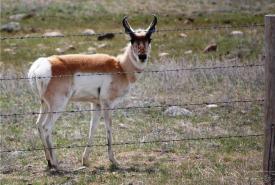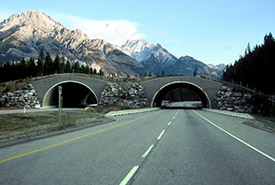NCC: Land Lines – Striving for fluid human-wildlife coexistence

Pronghorn (Photo by NCC)
My name is Evan Mah and I am an ecological restoration technician as a part of the Next Generation Conservation Leaders program with the Nature Conservancy of Canada (NCC). My job often involves routine fence maintenance and adjustments; however, only recently have I taken the time to evaluate why it is an integral part of NCC’s conservation efforts.
As an organization that has built a foundation on the interconnection of people and nature, it is our responsibility to examine every aspect of our actions that may have an influence on our natural world. While fencing is not the most glorious way that NCC integrates human activity with wildlife, it does play a large role in conserving the species that we live among.
So, what is it?
Fencing in rural areas can be done for several reasons, including livestock management, marking property lines and sometimes even to exclude unwanted wildlife on a property. Wildlife-friendly fencing involves recognizing areas where wildlife corridors intersect with smooth or barbed-wire fences and adjusting the top/bottom wire heights to allow deer, elk, pronghorn and other large mammals to either pass underneath or overtop. This allows for minimal impact on the behaviour and well-being of wildlife that are not intended to be contained or excluded from an area.
A wildlife corridor divided by human-built infrastructure can be enough to deter animals from using that corridor effectively, or at all. Most human-built infrastructure can’t be designed in a way that has absolutely no impact on wildlife’s well-being; however, lots can be catered and streamlined to have the least negative impact possible.
So what?
Wildlife-friendly fencing is a good example of allowing human activity to exist within nature, as opposed to designating areas for either conservation or human activity exclusively. The inspiration for this post is less about the fencing, and more about the dynamic and adaptive way of thinking for human-wildlife coexistence.

Trans-Canada Highway in Alberta, Canada, in the Banff National Park, between Banff and Lake Louise. (Photo by Qyd via Wikimedia Commons)
This method of thinking can be applied in many different ways. There are many current examples, including wildlife overpasses, bear-safe waste bins and even fishing/hunting regulations. While there may be alternative motives for some infrastructure, such as using bear-proof latches to keep humans safe from aggressive bear behaviour, it is in the best interest for the health of the wildlife as well. In this example, bears don’t become reliant on human-generated food sources. This prevents increasingly aggressive behaviour toward humans, ultimately resulting in less necessary bear management.
Regulations and closures have also been discovered to be an extremely effective manner of allowing humans and wildlife to exist interconnectedly. Fishing limitations, trail closures and fire restrictions are all ways to manage the impact that humans have on nature and its ecology. Stones still remain unturned when it comes to the development of humans coexisting within nature. There are always more steps to take, and while there has been lots of progress to be proud of, we need to continue to strive for innovation in the space of conservation and the human-wildlife relationship.





